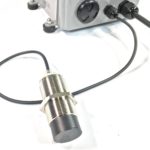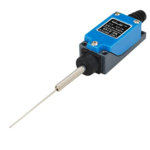CUT WATER USAGE IN PLATING WITH SPRAY RINSING

Adding a spray rinse is a very efficient way to improve rinsing, because the rinsing can be positioned over a process tank and all the rinsed solution goes back in the process tank. Its also bound to be much easier to implement than adding another tank to an existing line of tanks. A spray rinse can reduce dragout by at least 50% according to this article from Products Finishing
Ted Mooney wrote a piece called “20 ways to cut water usage in plating shops” that is still applicable today. So I won’t repeat what he has written previously but I will emphasize a couple of points. Specifically, points number 3 (spray rinsing) and 11 (rinse tank timing) are something Gizmo Engineering can help with. The third most important way to save water is to use top sprays. Ted writes:
If you handle ten loads per hour, and you spray for ten seconds each time a load is lifted, then water is running for only 100 seconds out of each 3600 seconds.
Thus you can install a powerful 36 GPM spraying system while consuming an average of only 1 GPM. Mount a top spray on a rinse tank, and you have a very effective two-stage rinsing system that consumes very little water.Automated lines can be programmed to spray during lift only; manual lines can be quipped with foot-operated valves or limit switches and timers.
Ted Mooney
USING A TIMER FOR SPRAY RINSING
A great way to conserve water is to consume fresh rinse water only for the time that you need to rinse the parts. And, there are the advantages that the rinse water is cleaner than the water in immersion rinse tanks. Also, the rinse water sprays with some amount of force to blast residual plating solution from the parts. Finally, spray rinses don’t take any additional floor space.
Gizmo Engineering has developed a timer that will detect the racks, and then open the water spray solenoid.The solenoid is typically provided as an option for our timers and is pre-wired. The only thing left to do to start saving water is to fabricate spray bars. Most shops are comfortable with outfitting a PVC pipe with some spray nozzles. The timing is handled by the T5 or T6 timers that are 120VAC. The system works by a sensor detecting the rack. This can be an inductive proximity switch, (preferred) or a lever-arm (or whisker) switch will also work.
DETECTING THE RACK
Proximity switches are the preferred method as they are immune to factory dirt, fumes and there are no moving parts to corrode. They will sense any metal object at a distance of up to 40 mm distance. However we have also used lever arm type or “whisker” switches.
Whichever switch is used to detect the rack, when the rack is lifted out of the tank, the timer delays the spray for the time you set so the rack can get in the best position for spraying. Then the sprays come on for whatever length of time you set. This delay conserves even more rinse water because the spray is only spraying the minimum time that you decide is effective. Below is an installation showing a model T6 timer. This way the amount of water added to the process tank is minimized. (this is another advantage of automatic rinsing over crude footswitches or kitchen sprayers controlled by an operator.)


